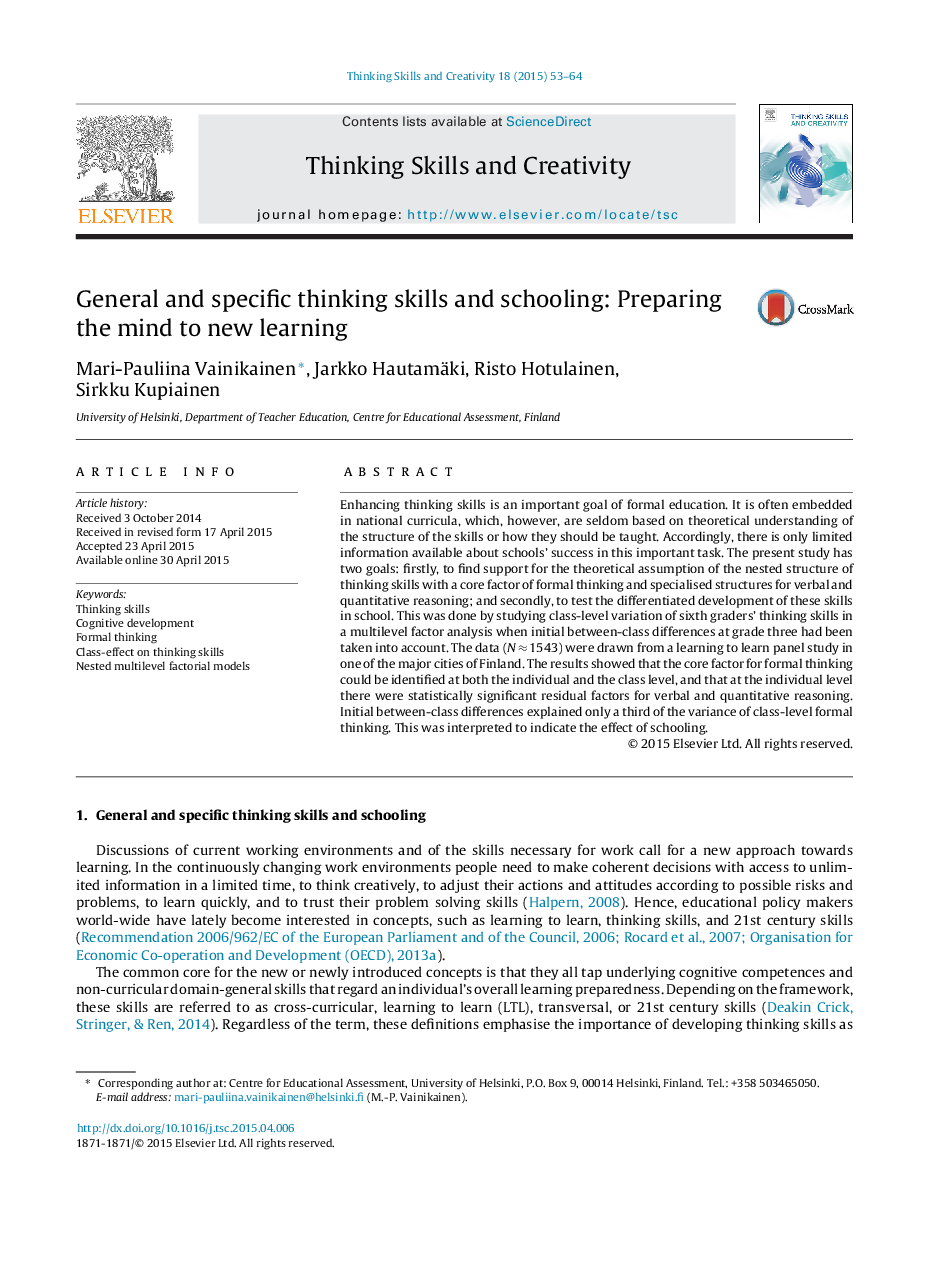| Article ID | Journal | Published Year | Pages | File Type |
|---|---|---|---|---|
| 375537 | Thinking Skills and Creativity | 2015 | 12 Pages |
•Preparing pupils for 21st century working life is an important goal of education.•Learning to learn is a measurable cross-curricular outcome of education.•The core of the cognitive learning to learn competences is in formal thinking.•Verbal and quantitative reasoning are only partially overlapping with formal thinking.•Formal thinking develops differently in different classes.
Enhancing thinking skills is an important goal of formal education. It is often embedded in national curricula, which, however, are seldom based on theoretical understanding of the structure of the skills or how they should be taught. Accordingly, there is only limited information available about schools’ success in this important task. The present study has two goals: firstly, to find support for the theoretical assumption of the nested structure of thinking skills with a core factor of formal thinking and specialised structures for verbal and quantitative reasoning; and secondly, to test the differentiated development of these skills in school. This was done by studying class-level variation of sixth graders’ thinking skills in a multilevel factor analysis when initial between-class differences at grade three had been taken into account. The data (N ≈ 1543) were drawn from a learning to learn panel study in one of the major cities of Finland. The results showed that the core factor for formal thinking could be identified at both the individual and the class level, and that at the individual level there were statistically significant residual factors for verbal and quantitative reasoning. Initial between-class differences explained only a third of the variance of class-level formal thinking. This was interpreted to indicate the effect of schooling.
